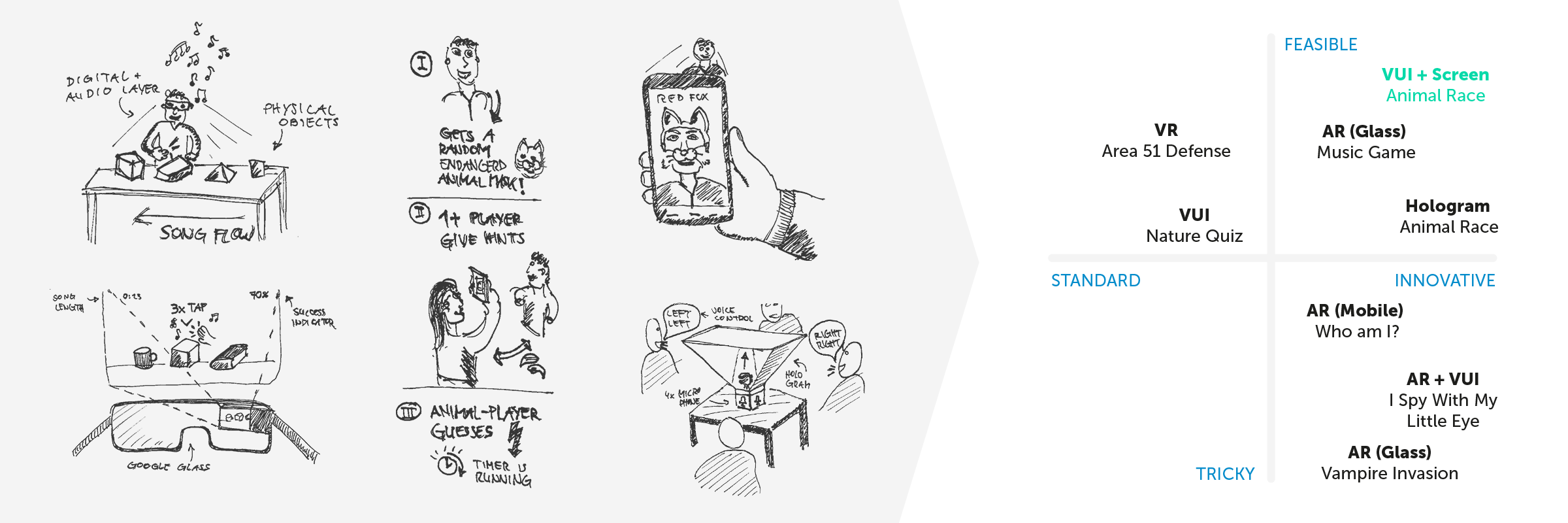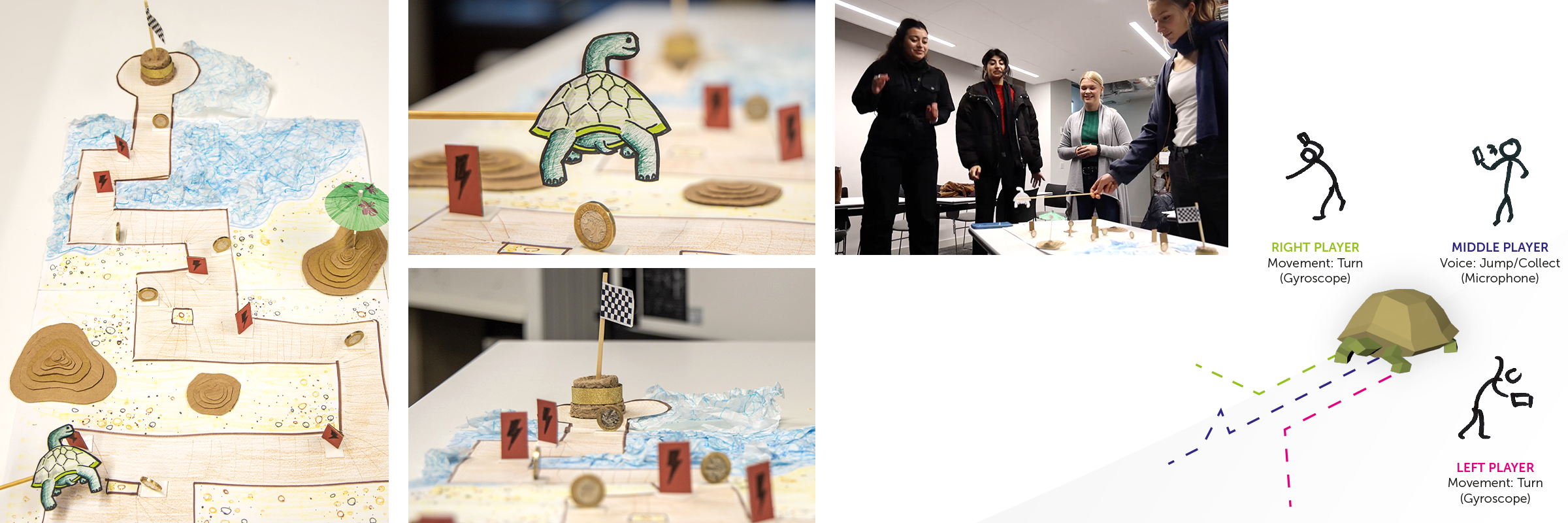A Multisensory Public Display Game Experience
“Make Some Noise For Nature” is a multiplayer game for public displays to raise awareness for endangered animals on Hawaii. My team and I developed this game in the course of CHI2020’s Student Game Competition. As finalists, we are about to present our innovative game concept on the CHI2020 in Hawaii in April 2020.
- PROJECT TYPE
University Project - MY ROLE
UX Designer, Developer - DURATION
Three Months - TEAM SETUP
4 HCI-Master’s students (@UCL)
Project Info
In 2020, ACM CHI’s Conference on Human Factors in Computing Systems CHI2020 on Hawaii for the first time asked students to submit novel approaches for games. As part of my Master’s in “Human-Computer Interaction” (MSc) at University College London, my team and I took part in the challenge. We’ve developed a multisensory multiplayer game by applying a user-centred design approach and came up with an innovative game concept. Each player’s smartphone sensors (voice and movement) are utilized to steer an endangered animal through its habitat. To yield behaviour change we incorporated educational contents in the story of the game. While playing the game the players automatically learn more about things that threaten endangered animals and about measures that help to prevent animal extinction.
TL;DR – Please note
In case you don’t want to read the whole case study we created two videos:

Early game ideas were sketched, discussed, and assessed on an innovation ✕ feasibility matrix.
Survey & Persona
Approaching a novel game experience
In the beginning, we asked ourselves how we might raise awareness and build knowledge about animal extinction through a collective, playful, and engaging game experience that teaches concrete actions. To tailor a cutting-edge game, we used a multi-method human-centred design process. We started with an extensive ideation session using various sketching techniques and assessed our ideas utilizing an innovation × feasibility matrix. After discussing our ideas, we focused on the theme of animal extinction and decided to use speech as the main input modality for a public display game for “young creatives” in museums. A subsequent survey (N=65) helped us to understand our targeted user group and their goals, pain points, and usage of technology. After that, we used the analysed data set to derive our main persona.

Interaction Mapping & Early User Tests
Designing for Interaction
Through our survey we found that people aren’t greatly experienced with using voice user interfaces and can’t imagine playing a game by voice only. However, secondary research on voice-enabled games showed that players massively enjoy such games (i.e. YASUHATI). This is why we’ve decided to do early user tests to evaluate different forms of interactions. We asked a team of three players to perform different player-animal interactions utilizing a paper prototype (see trailer video).
Contrary to our survey findings, our user tests revealed that players actually enjoy playing a voice-enabled game and other forms of player-animal interactions such as jumping are appreciated. Also, the social aspect of the game that emerged through the collective gameplay was in high regard.

Each set of player-animal interactions was tested with users utilizing a paper prototype (e.g. jump to overcome a barrier).
Storyboards & Wireframes
Shaping an appropriate fun and educational user experience
One of our main challenges was it to make the game not only novel (using smartphone sensors as an input modality) and fun but also make sure an educational experience is delivered. Therefore, we created storyboards to lay out the whole game interaction covering the attraction, gameplay, and post-game interaction phase. This helped us to create a holistic user journey that combines merry gameplay phases with a contribution to raised awareness for animal extinction and its causes. To assess the right amount of information that is delivered throughout the game, wireframes were utilized and discussed with five young creatives.
Three different amounts of information and media (text/video) were discussed in a scenario-based user testing. We found that the desired amount of information heavily depends on the user and text was preferred in comparison to a video. Based on that feedback, we iteratively refined the wireframes and created a new draft (see V4) which then was used as a foundation for the definite UI design (see video).
High Fidelity Prototype & Wizard-of-Oz-Testing
Let's play!
Multiple iterations of our game concept were tested and validated using low-/mid-fidelity prototypes and wireframes. After reaching a good level of confidence regarding the user needs, gameplay, technical details, etc. we wanted to implement a high-fidelity prototype to test the whole game interaction. I was responsible for creating a fully playable 3D game prototype using Unity. To rapidly design and develop the game, a combination of self-made 3D objects and objects from the Unity Asset Store were used.
Validating our game concept
The prototype then was tested in a Wizard-of-Oz setting in which the participants imagined that they controlled the game character (turtle) using their voices/movements while they played the game on a projector screen. In reality, the game character was steered by a wizard using a keyboard.
This game trailer shows our definite “Make Some Noise For Nature” game concept.
Learnings
What I've learned from this project
- My team and I fancied the idea of having a voice-controlled game. But our initial survey results seemed to disapprove this idea. I was glad we did secondary research (app store + literature analysis) and found that voice-controlled games were actually appreciated. This motivated us to not just trash our idea but simply test this form of game interaction utilizing a prototype. And see: Our participants enjoyed it a lot throughout all our user tests with low- and high fidelity prototypes. MAKE SOME NOISE FOR NATURE! ;-)
- Being part of an incredible team yields highly praised output. Thanks, Roos, Emma, and Luke for the amazing collaboration! ❤️
